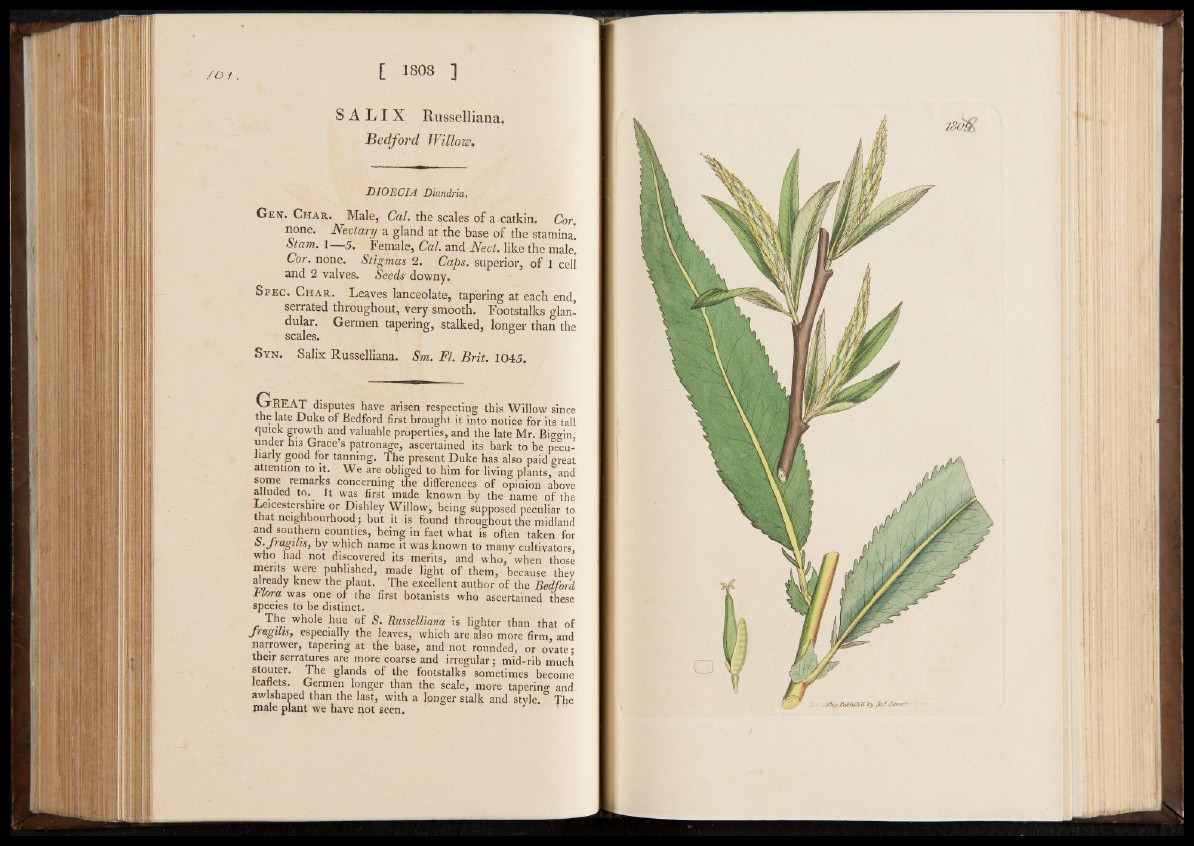
S A L I X Ru sse llian a .
Bedford Willow.
BIOECIA Diandria.
G ent. C h a r . Male, Cal. the scales of a catkin. Cor.
none. Nectary a gland at the base of the stamina.
Stam.. 1— 5. Female, Cal. and Nect. like the male.
Cor. none. Stigmas 2. Caps, superior, of 1 cell
and 2 valves. Seeds downy.
Spec. Char. Leaves lanceolate, tapering at each end,
serrated throughout, very smooth. Footstalks glandular.
Germen tapering, stalked, longer than the
scales.
Syn. Salix Russelliana. Sm. FI. Brit. 1045.
G-REAT disputes have arisen respecting this Willow since
the late Duke of Bedford first brought it into notice for its tall
quick growth and valuable properties, and the late Mr. Biggin,
under his Grace’s patronage, ascertained its bark to be peculiarly
good for tanning. The present Duke has also paid great
attention to it. We are obliged to him for living plants, and
s°me ,remarks concerning the differences of opinion above
alluded to. It was first made known by the name of the
Leicestershire or Dishley Willow, being supposed peculiar to
that neighbourhood; but it is found throughout the midland
and southern counties, being in fact what is often taken for
. Jragitis, by which name it was known to many cultivators,
who had not discovered its merits, and who, when those
merits were published, made light of them, because they
already knew the plant. The excellent author of the Bedford
Flora was one of the first botanists who ascertained these
species to be distinct.
The whole hue of S. Russelliana is lighter than that of
jragilis, especially the leaves, which are also more firm, and
narrower, tapering at the base, and not rounded, or ovate;
their serratures are more coarse and irregular; mid-rib much
stouter. The glands of the footstalks sometimes become
leaflets. Germen longer than the scale, more tapering and
awlshaped than the last, with a longer stalk and style. The
male plant we have jtot seen,